Our verdict
Pros
- Highly stable
- Excellent cushioning for heel strikers
- Impressively durable upper
- Outstanding ventilation
- Roomy upper for comfortable fit
- Fantastic value
- Versatile enough for everyday wear and gym use
Cons
- Midsole is firm and provides low energy return
- Outsole shows limited durability
- Not suitable for forefoot strikers
Audience verdict
Comparison
The most similar running shoes compared
+ + Add a shoe | |||||
|---|---|---|---|---|---|
| Audience score | 81 Good! | 76 Bad! | 85 Good! | 82 Good! | |
| Price | $100 | $100 | $65 | $80 | |
| Pace | Daily running | Daily running | Daily running | Daily running | |
| Arch support | Neutral | Neutral | Neutral | Neutral | |
| Weight lab Weight brand | 9.7 oz / 274g 10 oz / 283g | 9.1 oz / 257g 9 oz / 255g | 9.7 oz / 275g 10.7 oz / 303g | 11.5 oz / 326g 12.1 oz / 343g | |
| Drop lab Drop brand | 12.5 mm 9.0 mm | 11.9 mm 12.0 mm | 9.4 mm 10.0 mm | 11.3 mm 9.0 mm | |
| Strike pattern | Heel | Heel | HeelMid/forefoot | Heel | |
| Size | True to size | True to size | True to size | True to size | |
| Midsole softness | Balanced | Balanced | Balanced | Balanced | |
| Difference in midsole softness in cold | Small | Small | Small | Normal | |
| Toebox durability | Good | Bad | Bad | Decent | |
| Heel padding durability | Good | Good | Bad | Decent | |
| Outsole durability | Bad | Good | Decent | Decent | |
| Breathability | Breathable | Moderate | Moderate | Breathable | |
| Width / fit | Medium | Medium | Wide | Medium | |
| Toebox width | Medium | Medium | Medium | Medium | |
| Stiffness | Stiff | Moderate | Moderate | Moderate | |
| Torsional rigidity | Moderate | Moderate | Flexible | Moderate | |
| Heel counter stiffness | Moderate | Stiff | Moderate | Flexible | |
| Heel lab Heel brand | 30.7 mm 25.0 mm | 34.1 mm 34.0 mm | 31.2 mm 33.0 mm | 30.3 mm 25.0 mm | |
| Forefoot lab Forefoot brand | 18.2 mm 16.0 mm | 22.2 mm 22.0 mm | 21.8 mm 23.0 mm | 19.0 mm 16.0 mm | |
| Widths available | Normal | NormalWide | NormalWide | NormalWide | |
| Orthotic friendly | ✓ | ✓ | ✓ | ✓ | |
| Season | SummerAll seasons | All seasons | All seasons | SummerAll seasons | |
| Removable insole | ✓ | ✓ | ✓ | ✓ | |
| Ranking | #289 Bottom 21% | #342 Bottom 7% | #201 Bottom 45% | #280 Bottom 24% | |
| Popularity | #323 Bottom 12% | #154 Top 42% | #149 Top 41% | #202 Bottom 45% |
Who should buy
We highly recommend the Adidas Supernova 3 for:
- New runners seeking a first shoe with exceptional ventilation, ideal for summer jogs.
- Heel strikers in need of a shoe with a high heel-to-toe drop and a moderately firm midsole.
- Budget-conscious athletes aiming for a running shoe that can 2/3 runs a week without breaking the bank.
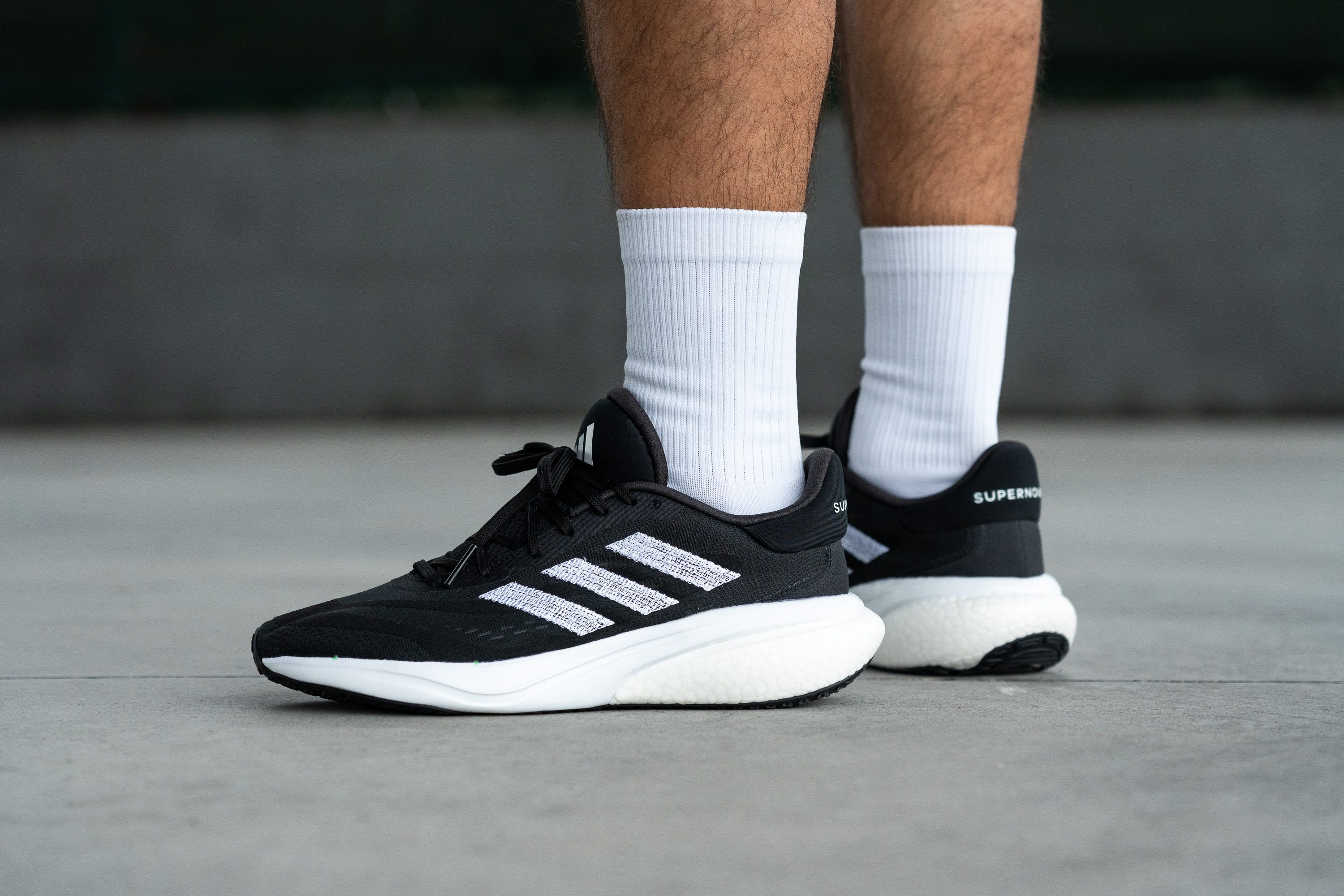
Who should NOT buy
Based on our lab tests, we do not recommend the Adidas Supernova 3 for those seeking comfort in long runs or for forefoot and midfoot strikers. Its lack of forefoot cushioning makes it a less-than-ideal choice for more than 10 miles, and even short runs may be uncomfortable for certain running styles. We suggest the Saucony Axon 3 instead.
Additionally, we found that the outsole's durability is really subpar, which is a major concern for those who wear out the rubber quickly.
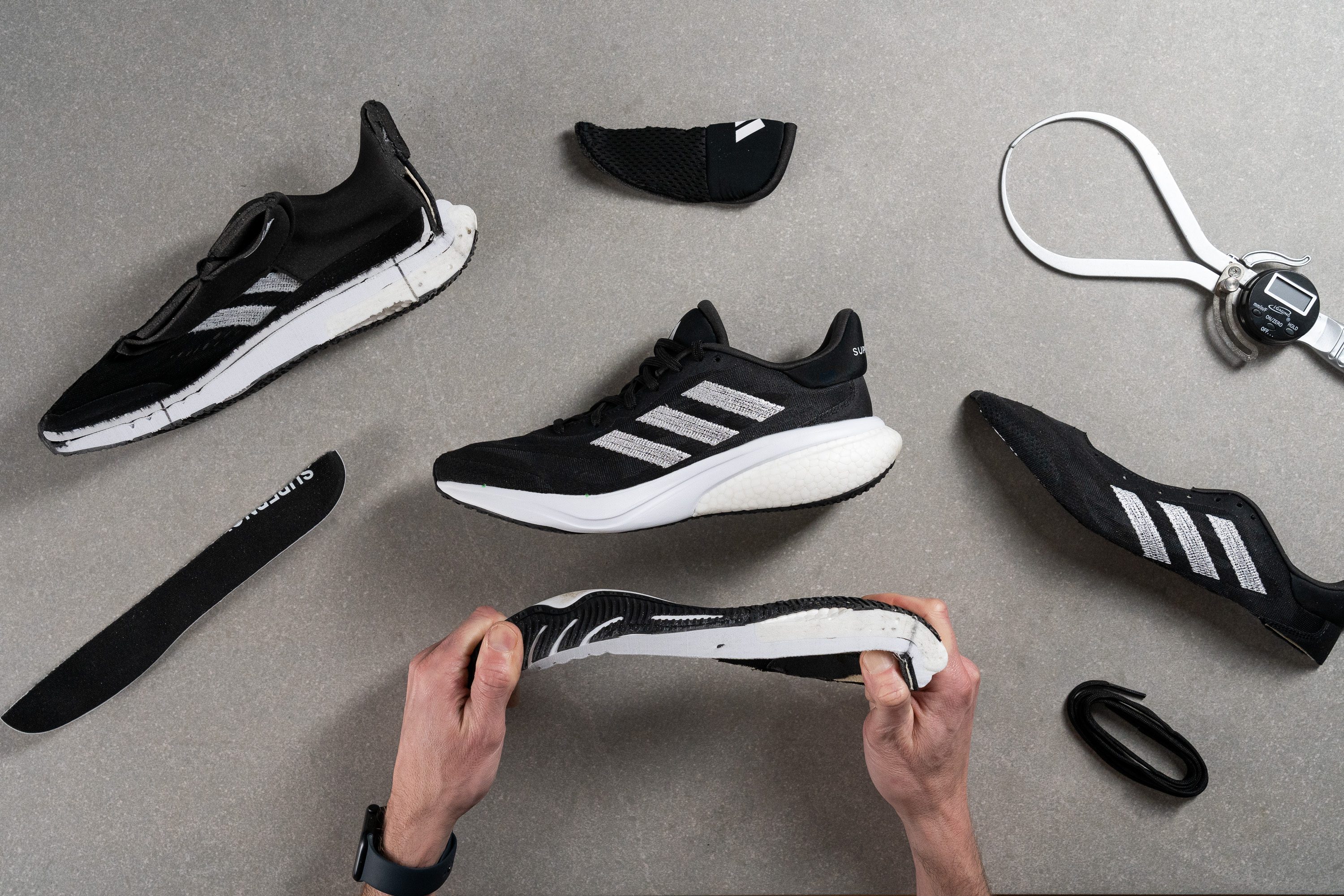
If that's crucial to you, and you're willing to invest more, the Adidas Ultraboost 1.0 features a Continental outsole offering a similar ride and drop, though at a higher price point. Alternatively, we believe that the similarly-priced Nike Downshifter 12 could also be a worthy option.
Cushioning
Heel stack
The heel has a moderate stack height. In today's standards, it might be considered slightly thin, but a few years back, it would have been viewed as a max-stack shoe. This just shows how road running shoes are evolving.
At 30.7 mm, we think it offers enough cushioning for heel strikers, even heavier ones. However, if you're accustomed to maximalist shoes, the Supernova 3 might feel a bit thin, and you might prefer something like the Adidas Adistar 2.0.
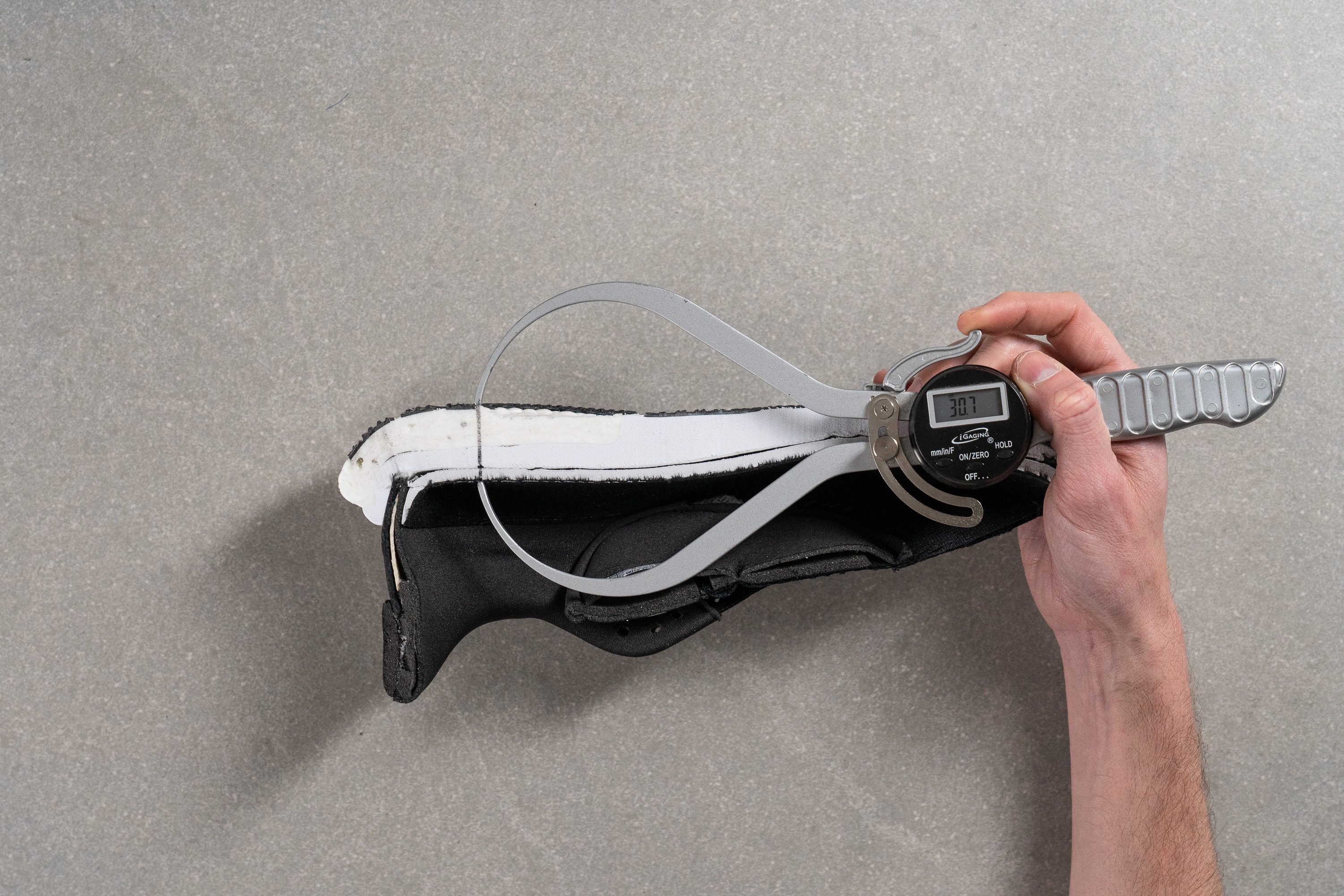
| Supernova 3 | 30.7 mm |
| Average | 34.8 mm |
Forefoot stack
The forefoot presents a contrasting scenario. With a mere 18.2 mm thickness, it offers minimal cushioning. In fact, once you remove the insole and outsole, there's hardly 1 cm of foam left.
This low cushioning is a key reason why we advise against the Supernova 3 for forefoot strikers, as we mentioned at the beginning of this lab review.
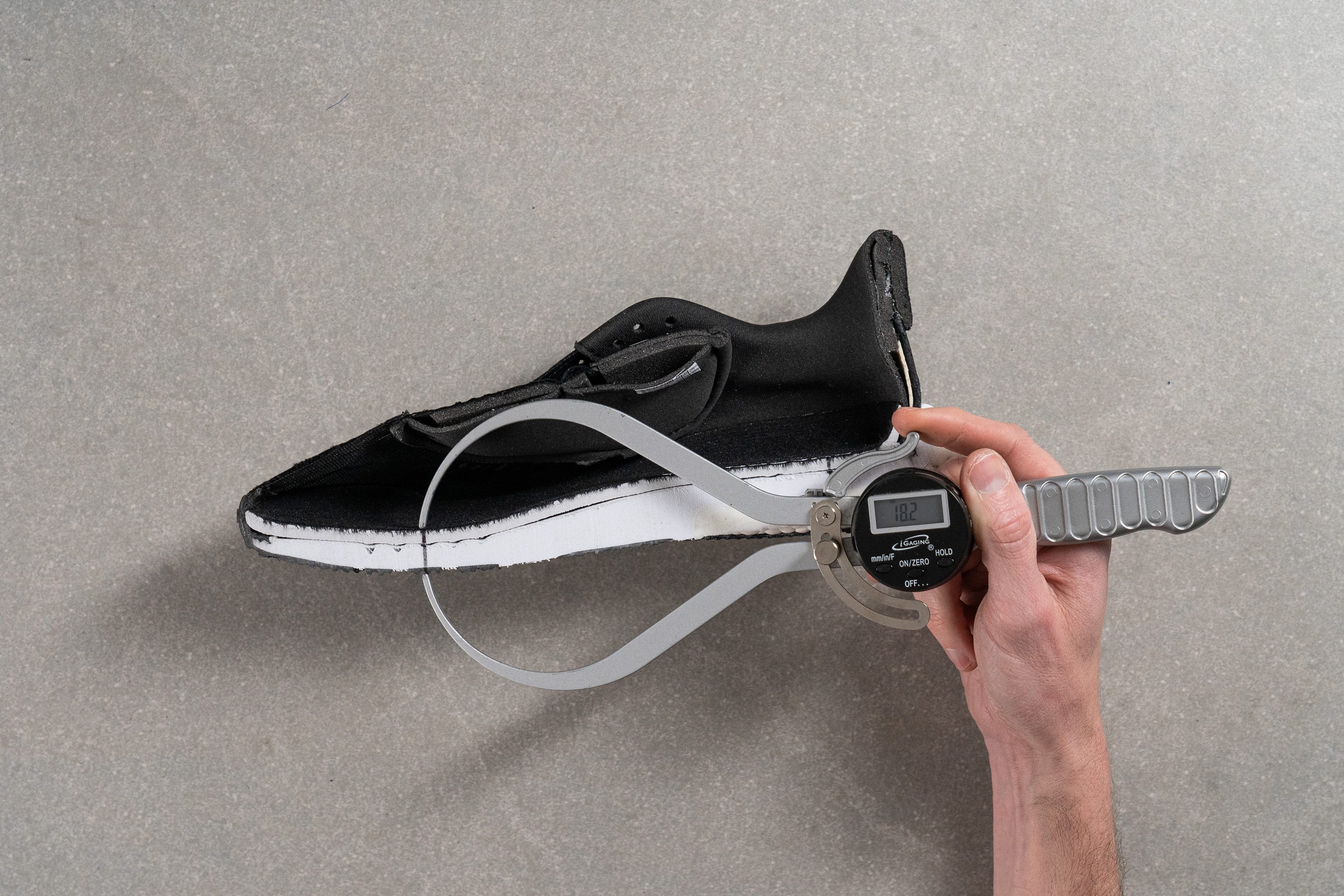
| Supernova 3 | 18.2 mm |
| Average | 26.1 mm |
Drop
The significant difference between the heel and forefoot heights hinted at a massive heel-to-toe drop, and indeed, it's 12.5 mm.
While they work wonderfully for extreme heel strikers, anyone with a forefoot or midfoot strike technique should steer clear of the Supernova 3.
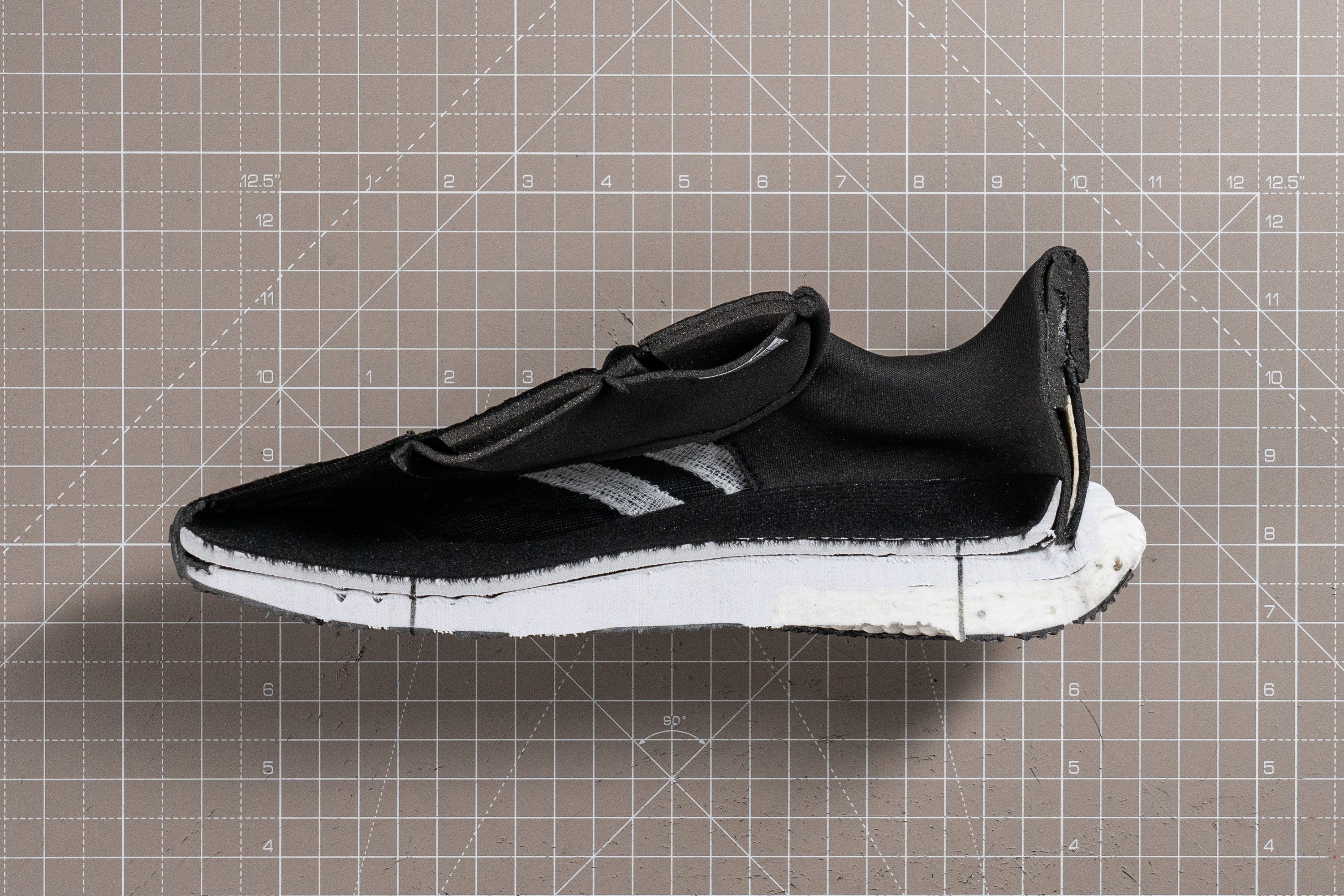
| Supernova 3 | 12.5 mm |
| Average | 8.6 mm |
Midsole softness
The Supernova 3 sports a dual-foam midsole. In the forefoot, midfoot, and upper heel, it uses Bounce (27.0 HA), an EVA foam by Adidas commonly found in their entry-level daily trainers.
It leans towards the firmer side, and you shouldn't expect much energy return from it at all. If you're looking for a plush midsole experience, this isn't the one.
In the lower part of the heel, there's a chunk of Boost (secondary foam). We'll delve deeper into this secondary foam in the next section.

| Supernova 3 | 27.0 HA |
| Average | 20.4 HA |
Secondary foam softness
As we mentioned earlier, the lower part of the heel features Boost, Adidas's well-known foam. It's a bit softer than Bounce (24.4 HA) and feels noticeably better since it's made from TPU pellets, not EVA.
However, Boost's major downside is its weight. We believe this is why Adidas only used a small chunk of it, aiming to add extra cushioning for heel strikers without adding too much heft overall.

| Supernova 3 | 24.4 HA |
| Average | 22.6 HA |
Size and fit
Size
Adidas Supernova 3 fits true to size (14 votes).
Width / Fit
Now, let's examine the upper. We measured 102.3 mm at its widest part, making it suitable for those with wide feet.
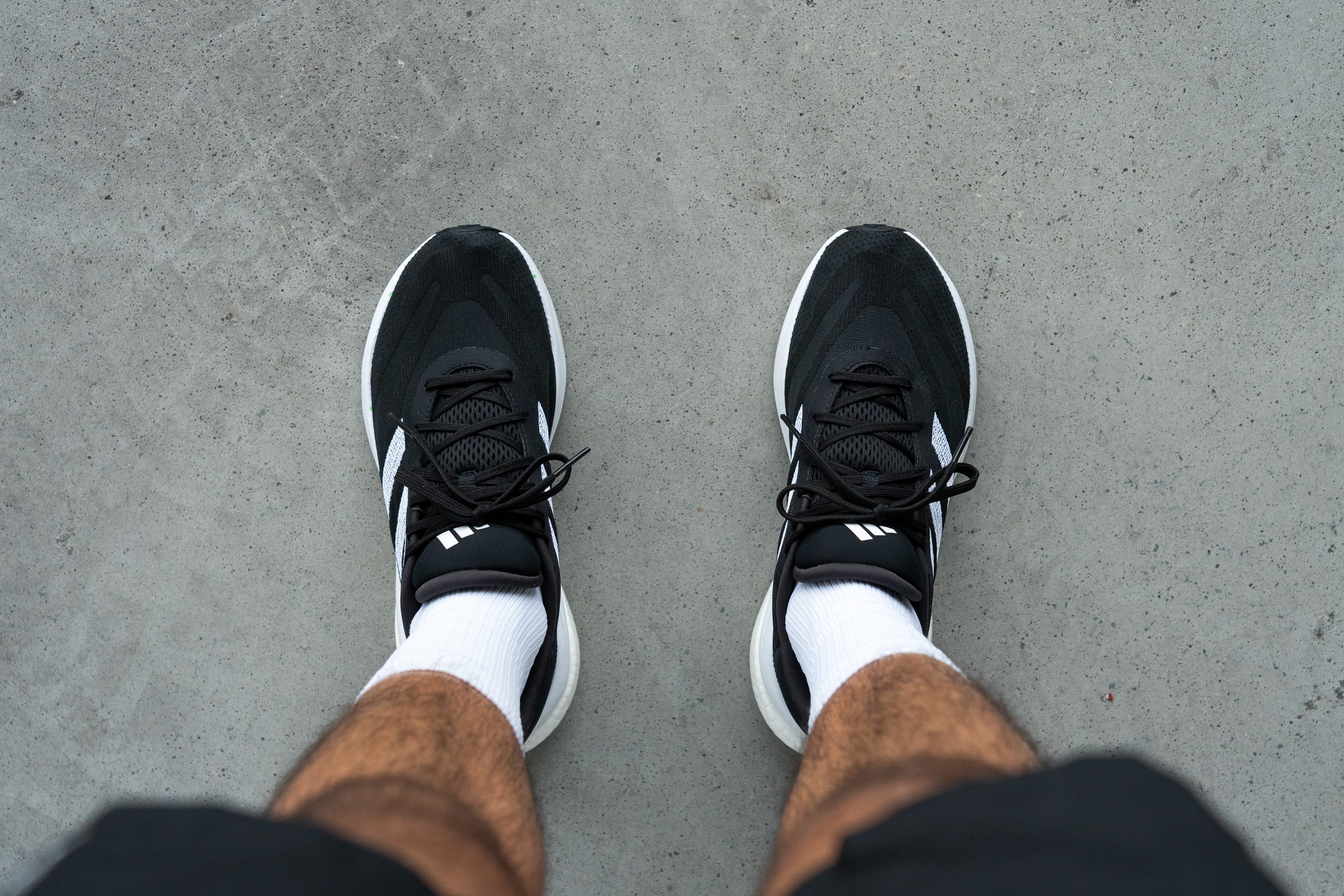
It's also a great fit for runners with average-sized feet, but might feel a bit wobbly for those with narrow feet.
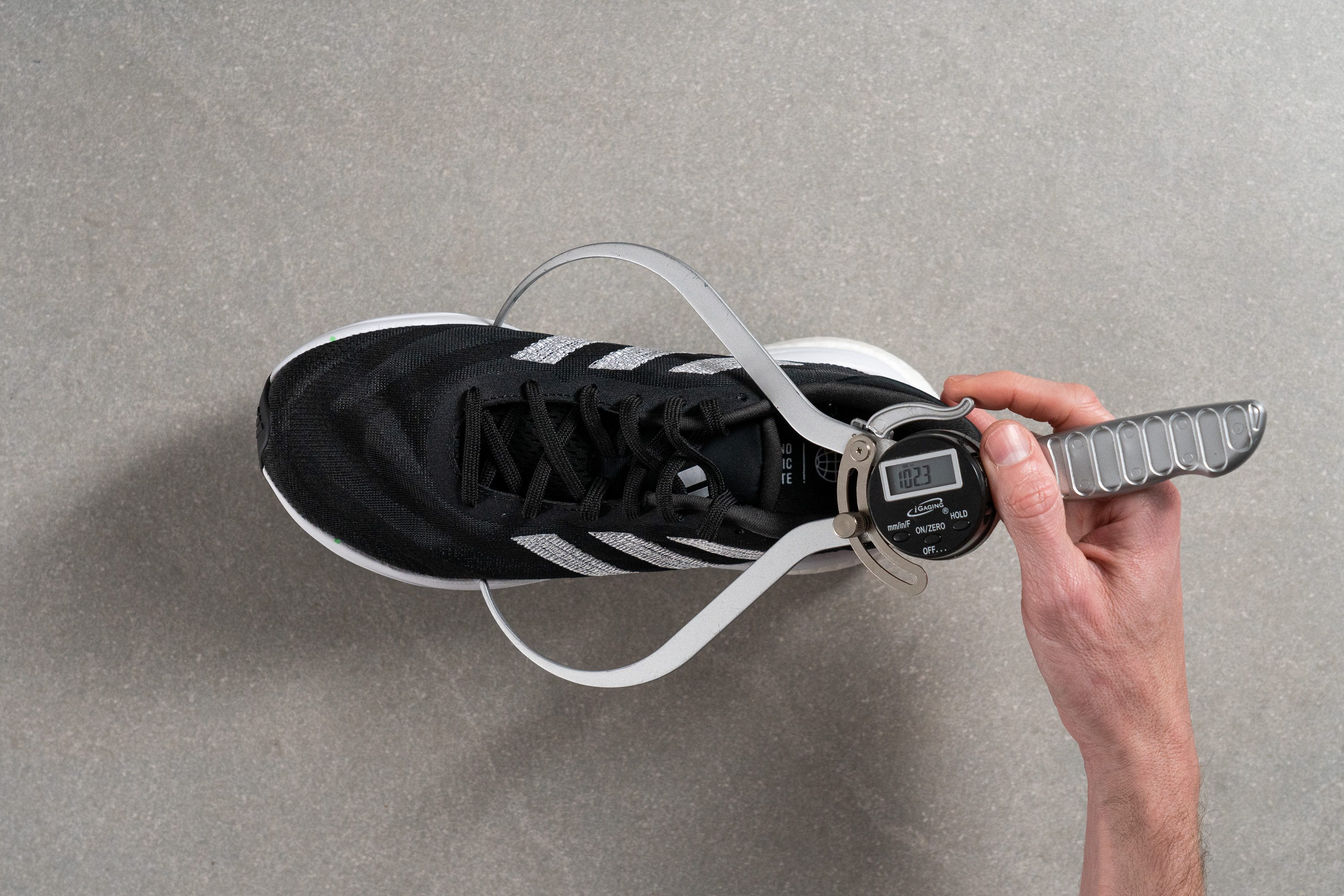
This test follows an older methodology, which is why you don't see recently tested shoes in the chart. Results from different methodologies can not be compared.
| Supernova 3 | 102.3 mm |
| Average | 98.5 mm |
Toebox width
In the big toe area, we took another measurement and found it to be 78.9 mm. This is more in line with a regular-sized shoe, not as wide as the previous measurement, but still roomy!
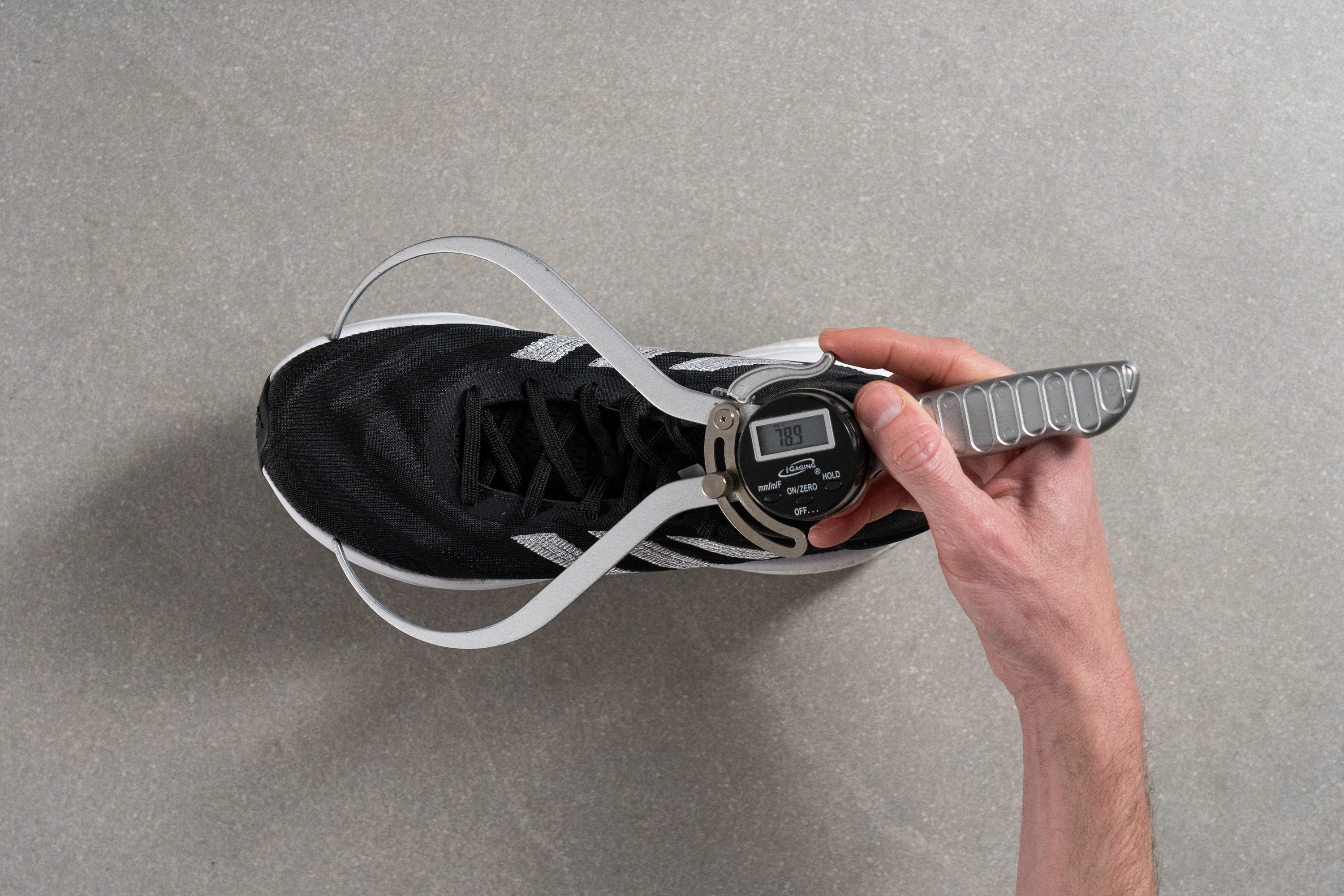
This test follows an older methodology, which is why you don't see recently tested shoes in the chart. Results from different methodologies can not be compared.
| Supernova 3 | 78.9 mm |
| Average | 78.4 mm |
Flexibility / Stiffness
We were thrilled to see how effortlessly the Supernova 3 bent in the lab, requiring only 17.6N of force to hit the 90-degree mark. That's remarkably low, making perfect sense considering its minimal foam in the forefoot and strategic outsole cutouts to boost flexibility.
This outcome is crucial because a stiffer shoe tends to be less appealing for everyday, all-day wear. However, the Supernova 3 is versatile enough for a walks, gym sessions, or even a shopping evening.
This test follows an older methodology, which is why you don't see recently tested shoes in the chart. Results from different methodologies can not be compared.
| Supernova 3 | 17.6N |
| Average | 28.1N |
Stiffness in cold (%)
In colder temperatures—after 20 minutes in the freezer—the Bounce foam once again showed remarkable performance, becoming only 21.3% stiffer.
| Supernova 3 | 21% |
| Average | 32% |
Weight
Weighing in at 9.7 oz (274g), the Supernova 3 does a good job on the scales.
However, it has a subtle trick—it clearly packs less foam than its competitors, which is something we plan to measure in our next lab tests.
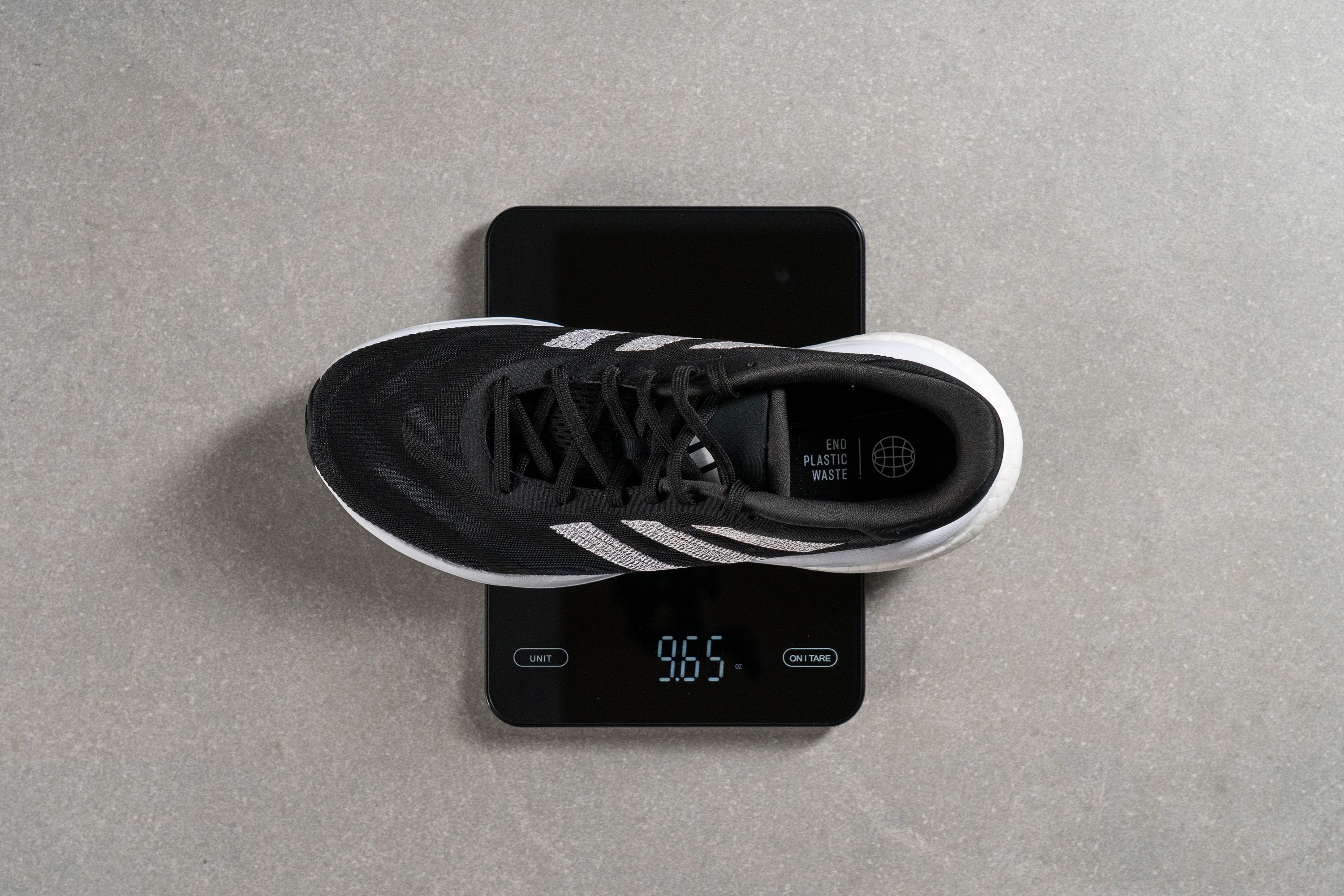
| Supernova 3 | 9.7 oz (274g) |
| Average | 9.3 oz (265g) |
Breathability
Breathability is often a concern with value-oriented shoes. At first glance, the Supernova 3's upper appeared super-thin, but black shoes can be deceiving when guessing airflow. So, we decided to move beyond guesses and start testing.
The first test, crucial for assessing breathability, involves our smoke-pumping machine. The Supernova 3 excelled here, earning a perfect 5/5.
Using our light, we pinpointed areas with more airflow. It's clear that the toebox and the lateral side of the forefoot are thinner, featuring a carefully structured mesh that balances ventilation and support—a smart move by Adidas.
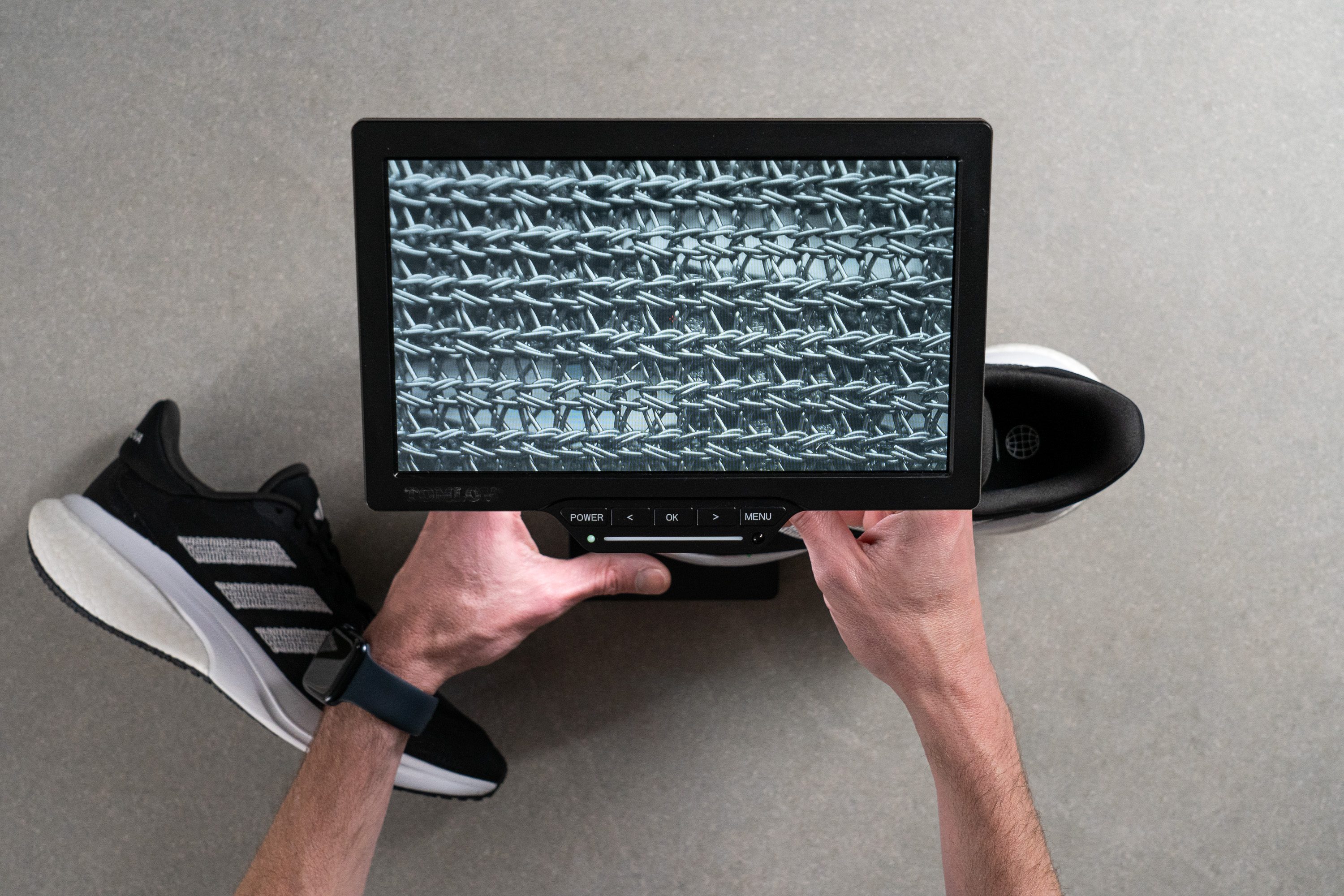
Examining the mesh under our microscope, it's evident that Adidas uses two different layers. There's an outer layer covering the entire shoe and a second one adding structure and support in specific areas.
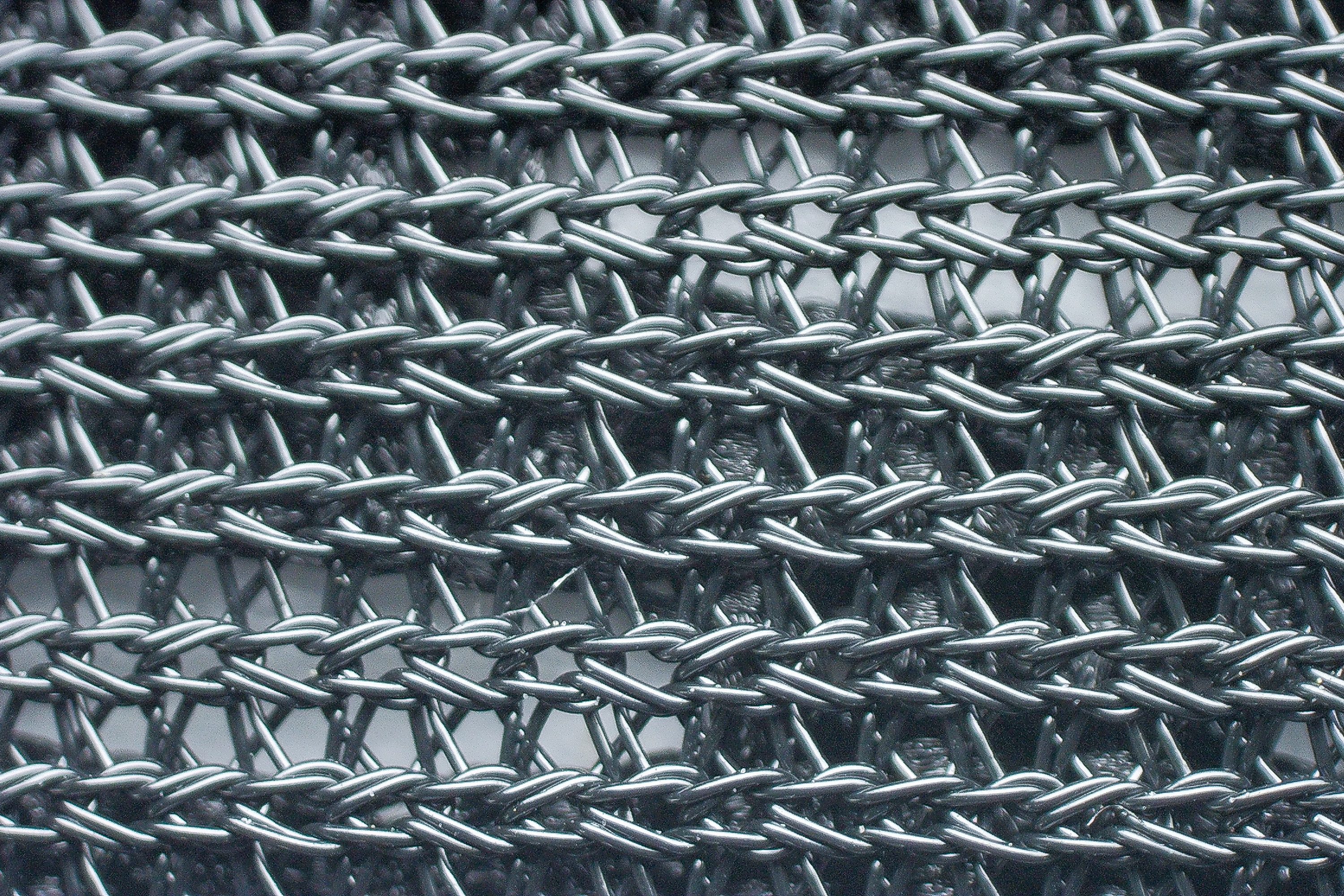
However, not everything is perfect, which makes sense because this is a shoe that aims to a lower price point. Thus, the trade-off is that the upper doesn't feel cozy or stretchy at all.
| Supernova 3 | 5 |
| Average | 3.7 |
Stability
Lateral stability test
If you're okay with a midsole that's on the firmer side, you'll enjoy some inherent perks, like enhanced stability.
We can confidently say that in the world of budget-friendly daily trainers, there aren't many neutral shoes that offer more stability than the Supernova 3.
Torsional rigidity
As we tried to bend and twist the Supernova 3 by hand, we encountered a bit of resistance. This led us to rate its torsional rigidity at 3 out of 5.
| Supernova 3 | 3 |
| Average | 3.5 |
Heel counter stiffness
We had a similar experience with the heel counter. Adidas played it safe, opting for a moderate approach that we also rated 3 out of 5.
| Supernova 3 | 3 |
| Average | 2.9 |
Midsole width - forefoot
Now, let's discuss the shoe's dimensions. In the forefoot, we measured 114.8 mm, providing enough stability without making the shoe too large.
Since we've already ruled out the Supernova 3 for forefoot strikers, this seems like a smart approach. Most people wearing this shoe will likely land on their heels, needing stability in the rear rather than a lot of support in the front.
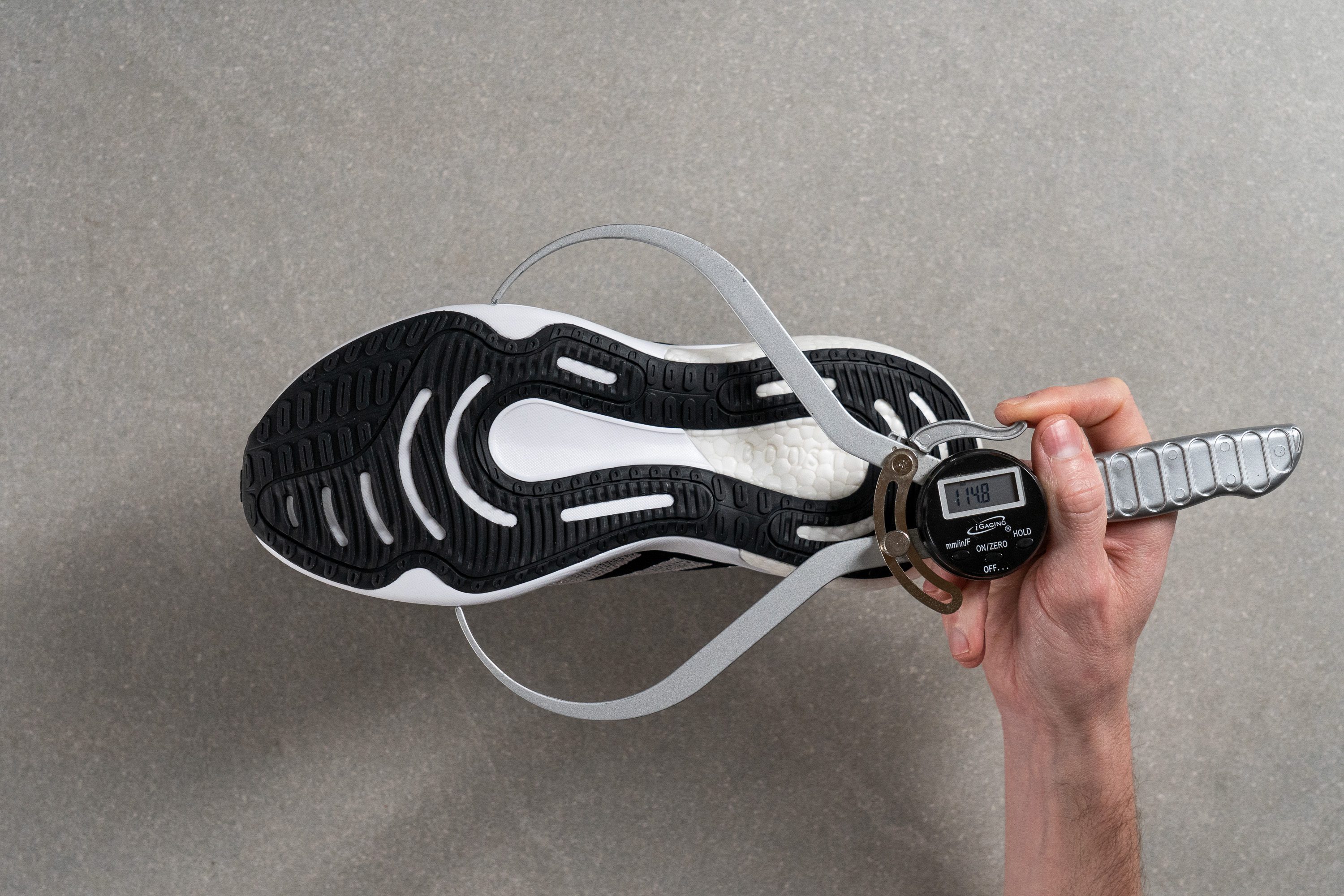
| Supernova 3 | 114.8 mm |
| Average | 114.3 mm |
Midsole width - heel
For that formula to be effective, a wider-than-usual heel is essential, and luckily, that's exactly what we have here.
Adidas has almost designed a heel reminiscent of a stability shoe, measuring an impressive 98.6 mm on our caliper. That's why, during our tests, we felt confident that heel strikers would absolutely love this one!

| Supernova 3 | 98.6 mm |
| Average | 90.7 mm |
Durability
Toebox durability
The great thing about rough uppers is their impressive durability. Typically, the softer the material, the greater the damage it suffers. And the Supernova 3 offers actually the opposite experience.
That's why, under our rigorous Dremel test, we found that it delivered a good performance, scoring a fantastic 4 out of 5.
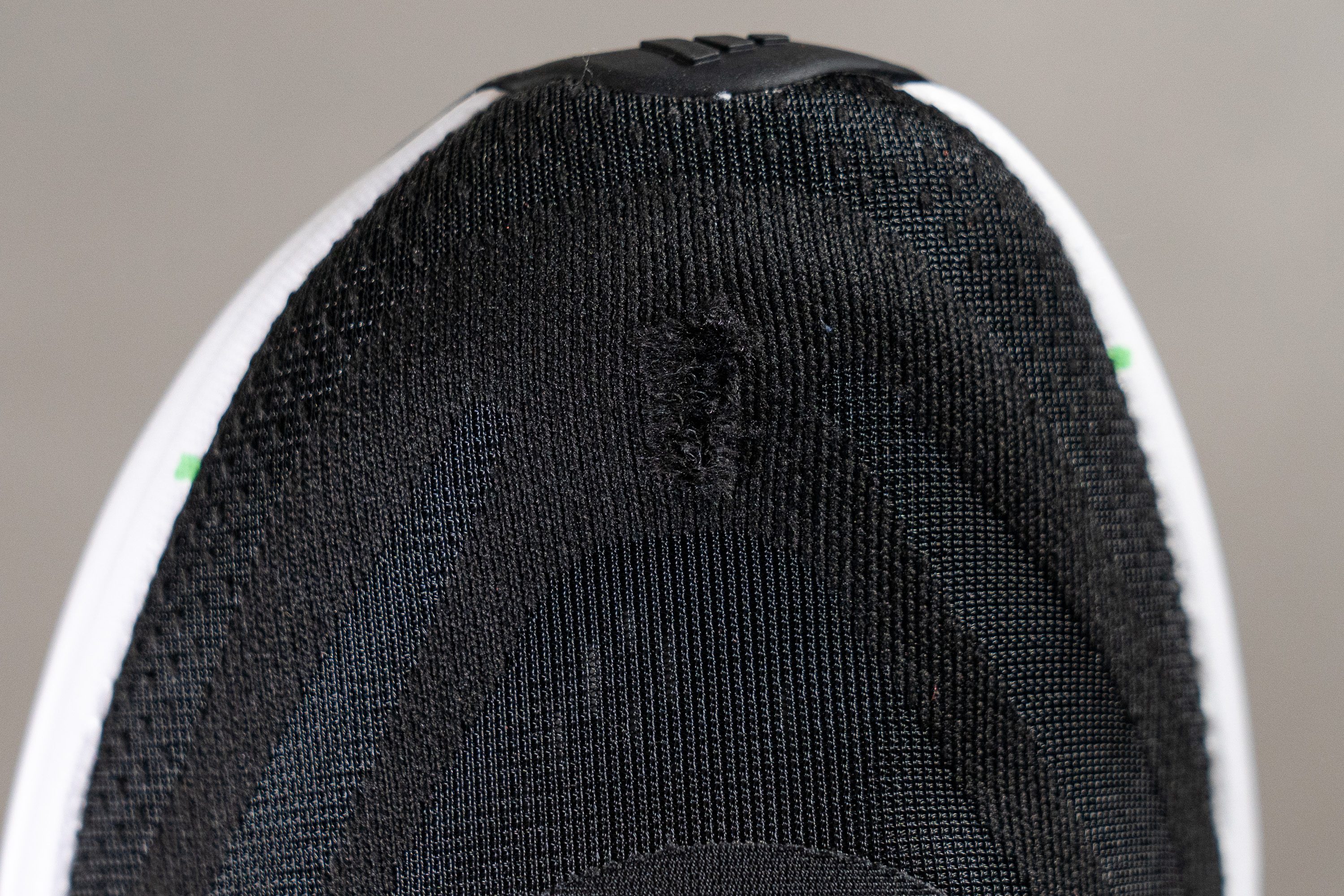
| Supernova 3 | 4 |
| Average | 2.6 |
Heel padding durability
Next, we focused on the heel area and conducted the same test—5000 revolutions per minute and 3.2N of force with the Dremel.
The outcome was identical—4/5!

| Supernova 3 | 4 |
| Average | 3.4 |
Outsole hardness
Curious to see if this trend continued, we turned the shoe over to inspect the outsole. We didn't find any Continental rubber, which wasn't surprising since it's a value-oriented shoe from Adidas. That feature is typically reserved for their pricier models.
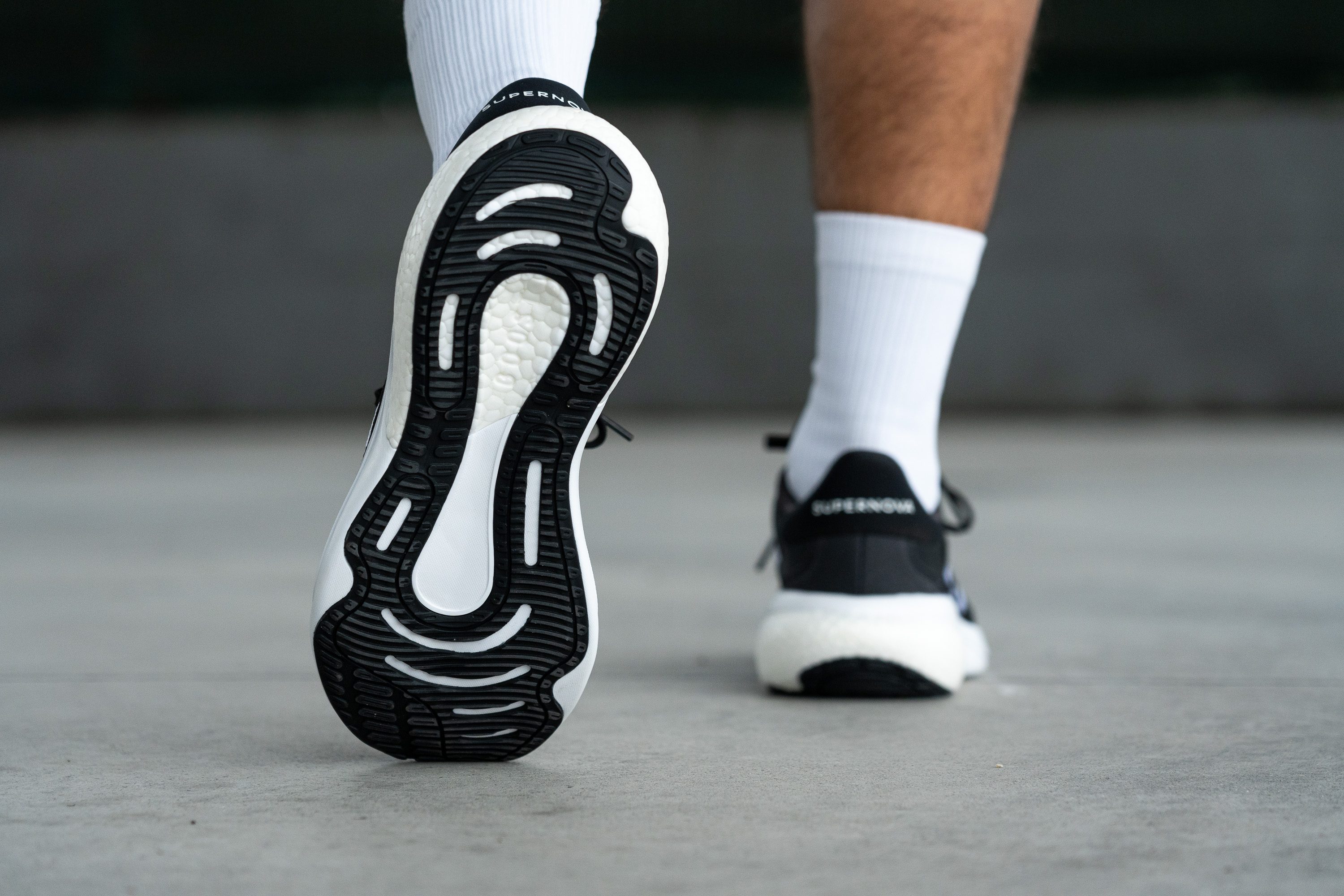
In terms of hardness, we measured 81.0 HC, which is pretty much average. This suggests the shoe should have at least decent durability.
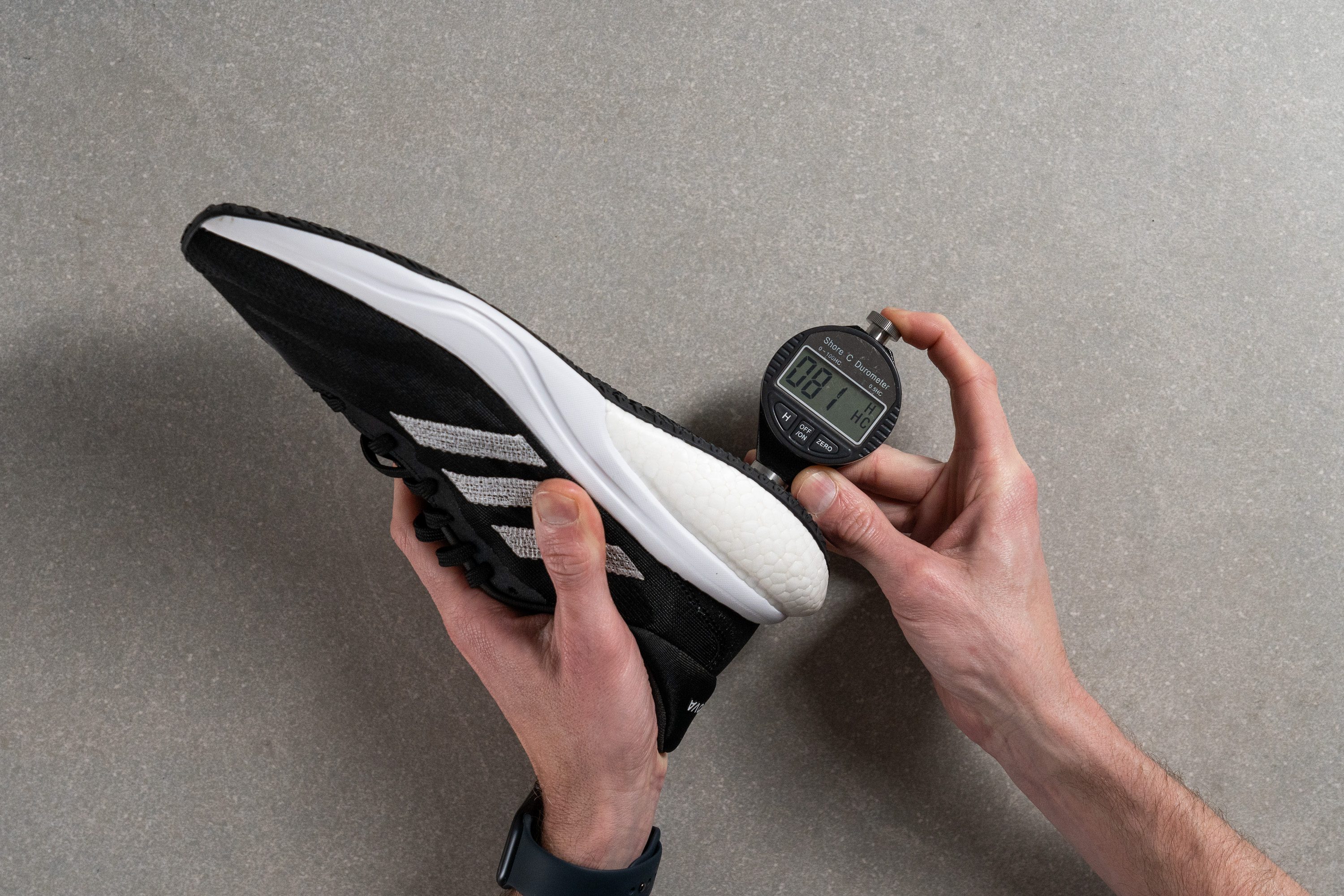
| Supernova 3 | 81.0 HC |
| Average | 79.2 HC |
Outsole durability
For our third Dremel test, we aimed to assess the durability of the non-Continental outsole.
Regrettably, it showed one of the poorest performances we've seen in our lab for this test. The 3.4 mm indentation left by the Dremel, compared to other running shoes we've tested, was frankly disappointing.
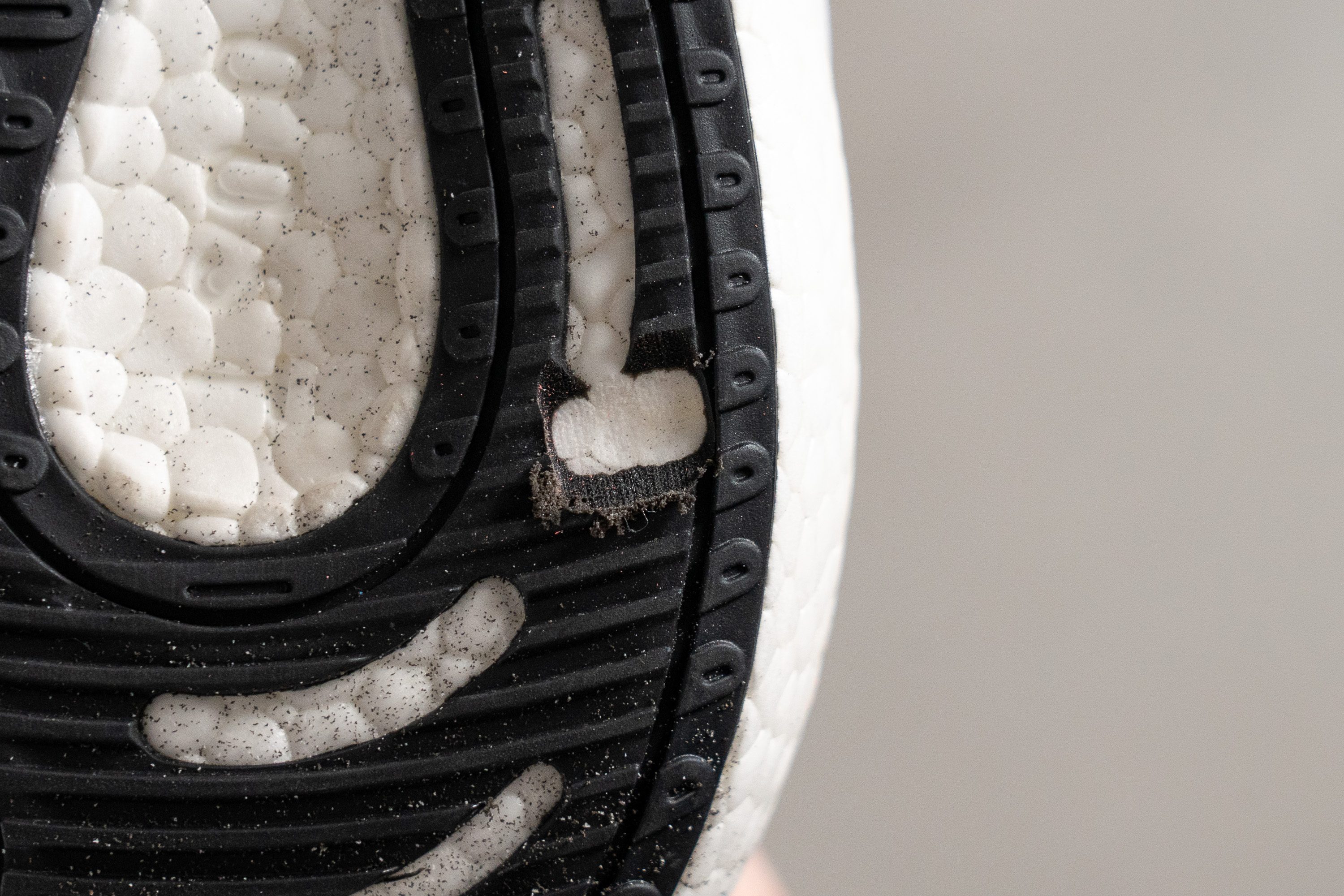
| Supernova 3 | 3.4 mm |
| Average | 1.1 mm |
Outsole thickness
The situation worsens because, rather than adding thickness to compensate for the poor durability, Adidas opted for just 2.5 mm, which falls below average.

This thinness could result in early wear and tear for runners who typically cause damage in this area.
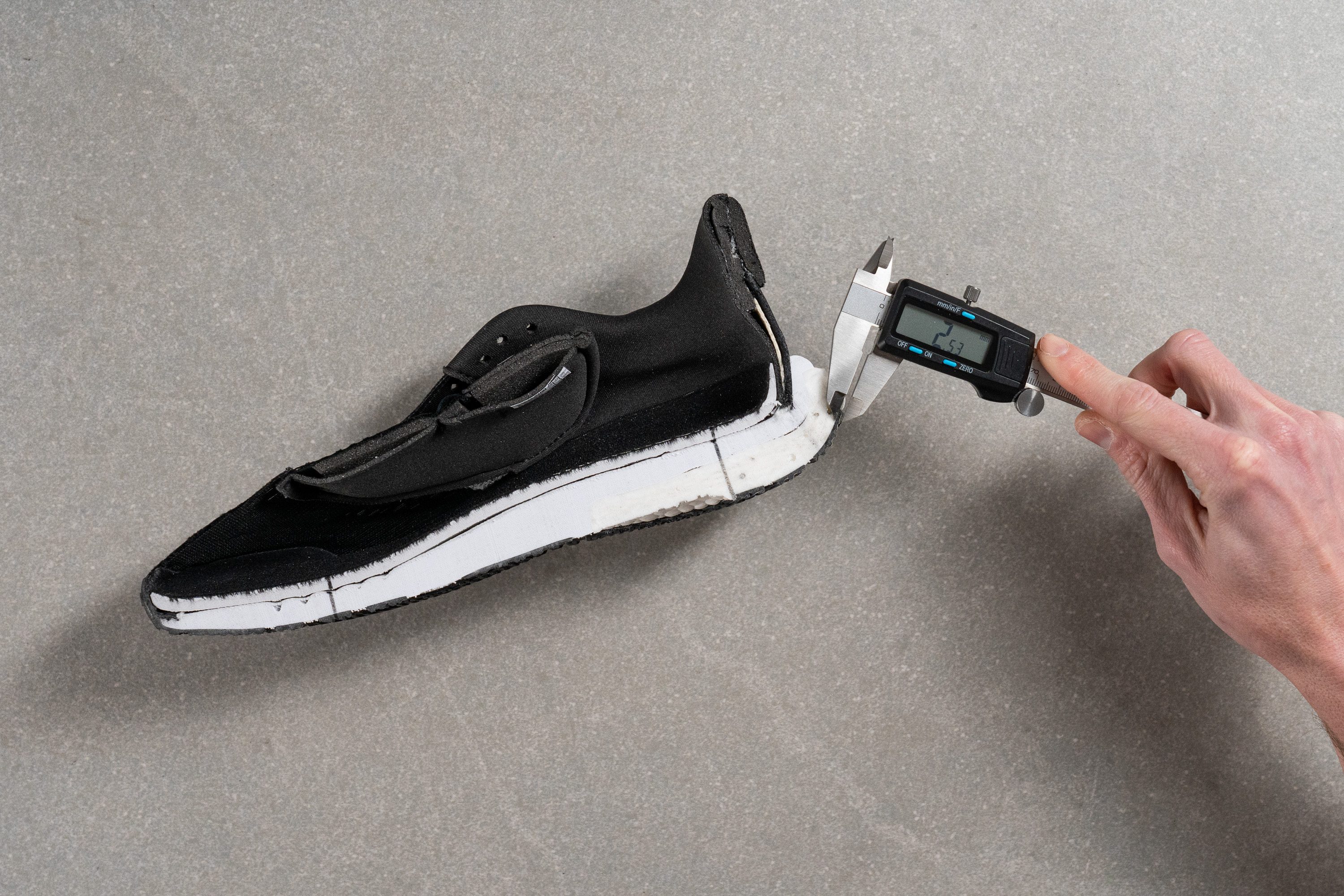
| Supernova 3 | 2.5 mm |
| Average | 3.2 mm |
Misc
Insole thickness
The insole, measuring at 5.0 mm, is a bit thicker than what we typically find in our lab tests, though it's nothing extraordinary.

| Supernova 3 | 5.0 mm |
| Average | 4.5 mm |
Removable insole
The insole is removable since it isn't glued down. Also, thanks to the regular shape of the last, you can fit nearly any third-party orthotic into the Supernova 3.
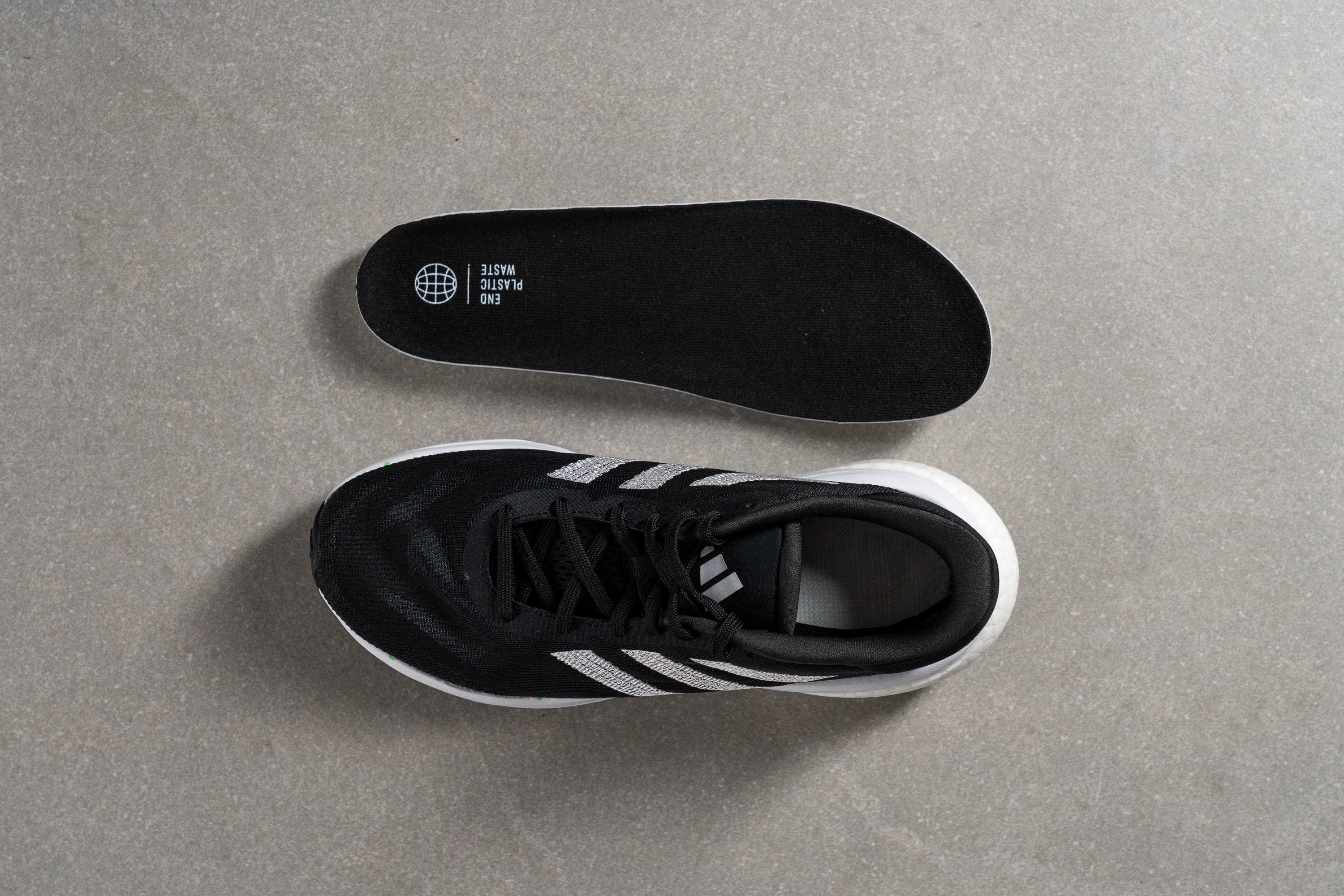
| Supernova 3 | Yes |
Midsole softness in cold (%)
To gauge how the Bounce foam performs in cold conditions, we chilled it in the freezer for 20 minutes before testing it again.
Impressively, we observed only a 9.7% difference from the room temperature reading, which is fantastic for an EVA-based foam.
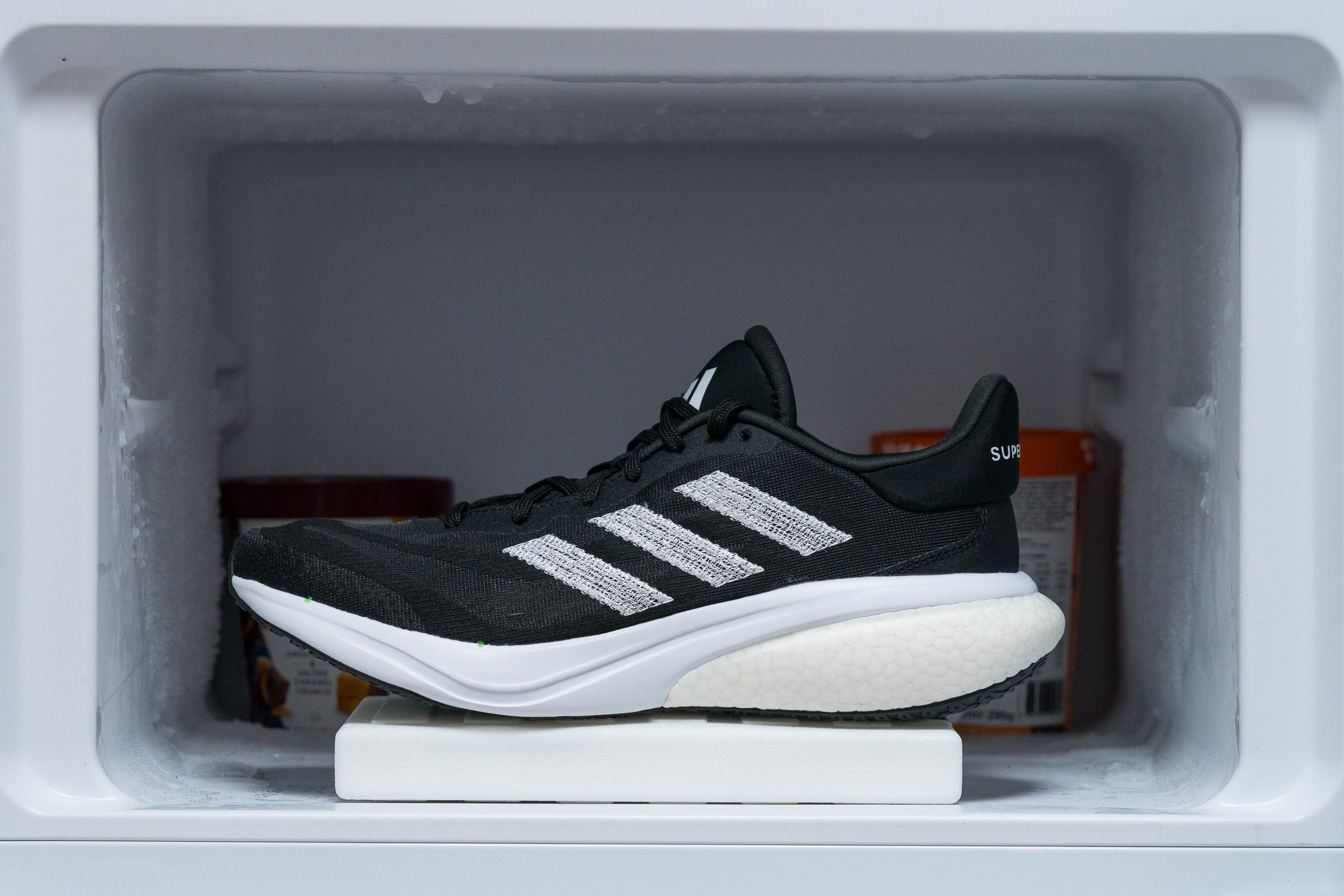
| Supernova 3 | 10% |
| Average | 25% |
Reflective elements
Sadly, we noticed that Adidas overlooked adding reflective elements, making you less visible at night, particularly in this black colorway.
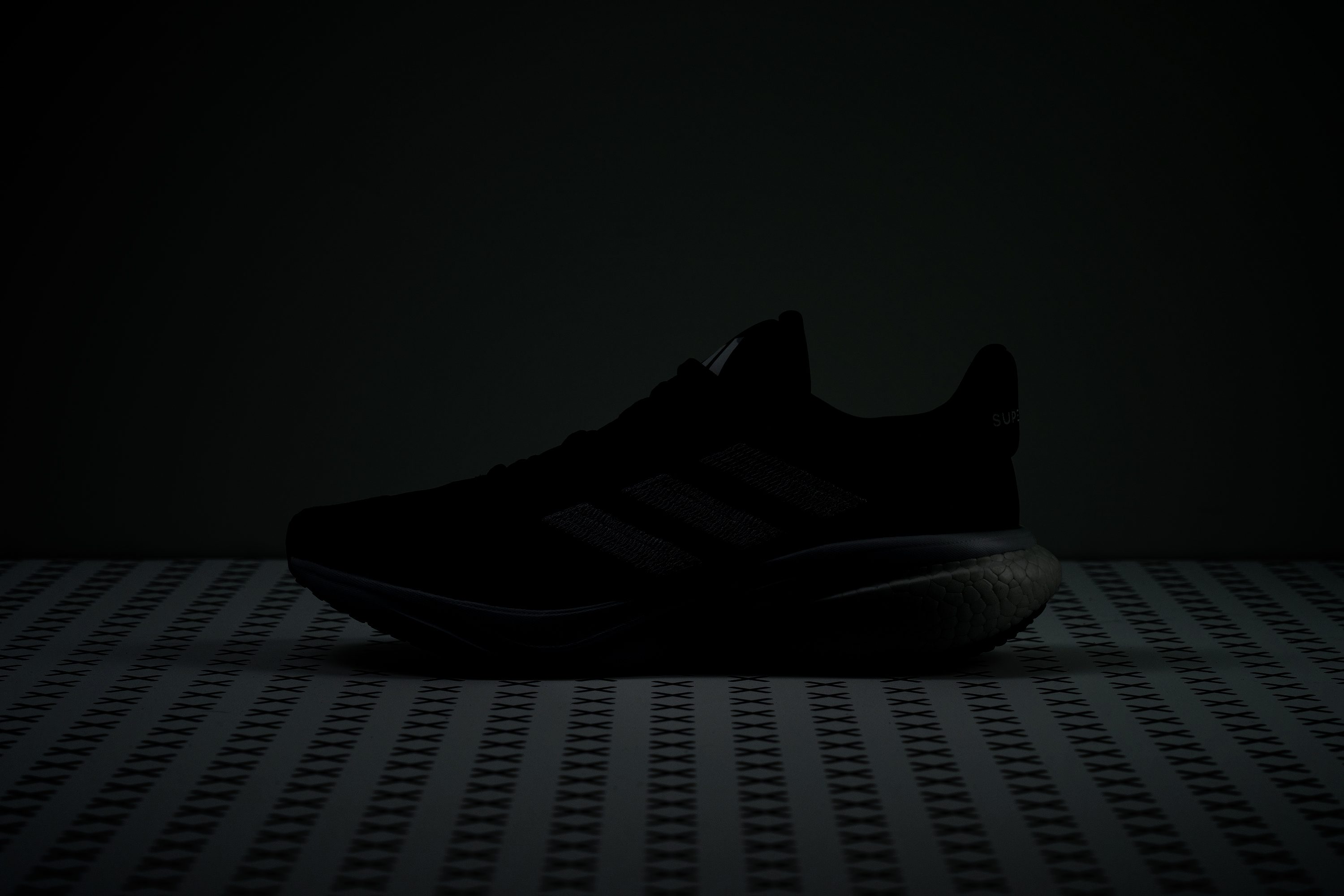
| Supernova 3 | No |
Tongue padding
The tongue is extremely padded, with two full slabs of foam totaling 10.0 mm.
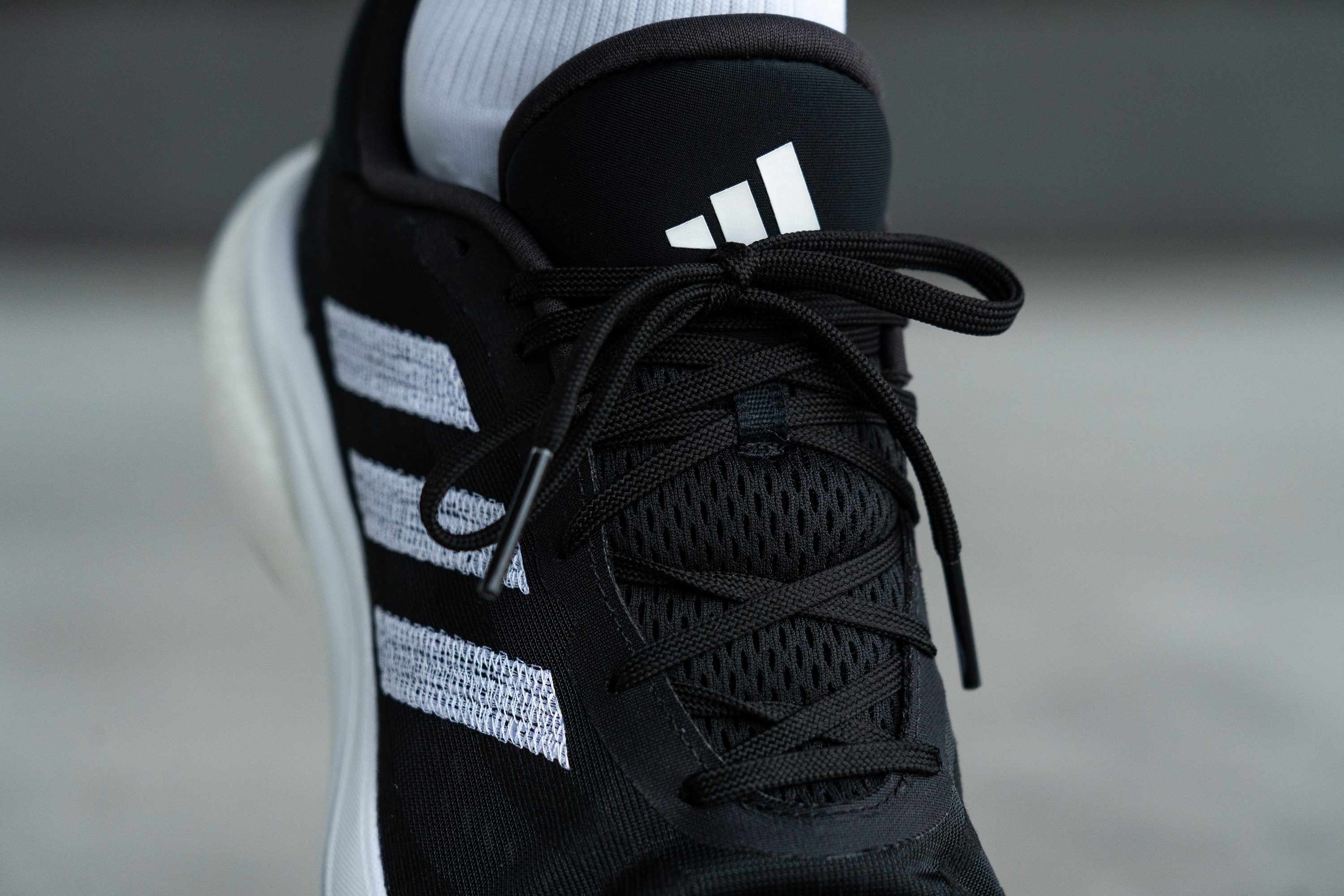
We believe this might be a bit excessive and Adidas could probably reduce it by a few millimeters, maintaining the same comfort while cutting down on weight. However, if all that matters to you is comfort, the Supernova 3 really delivers.
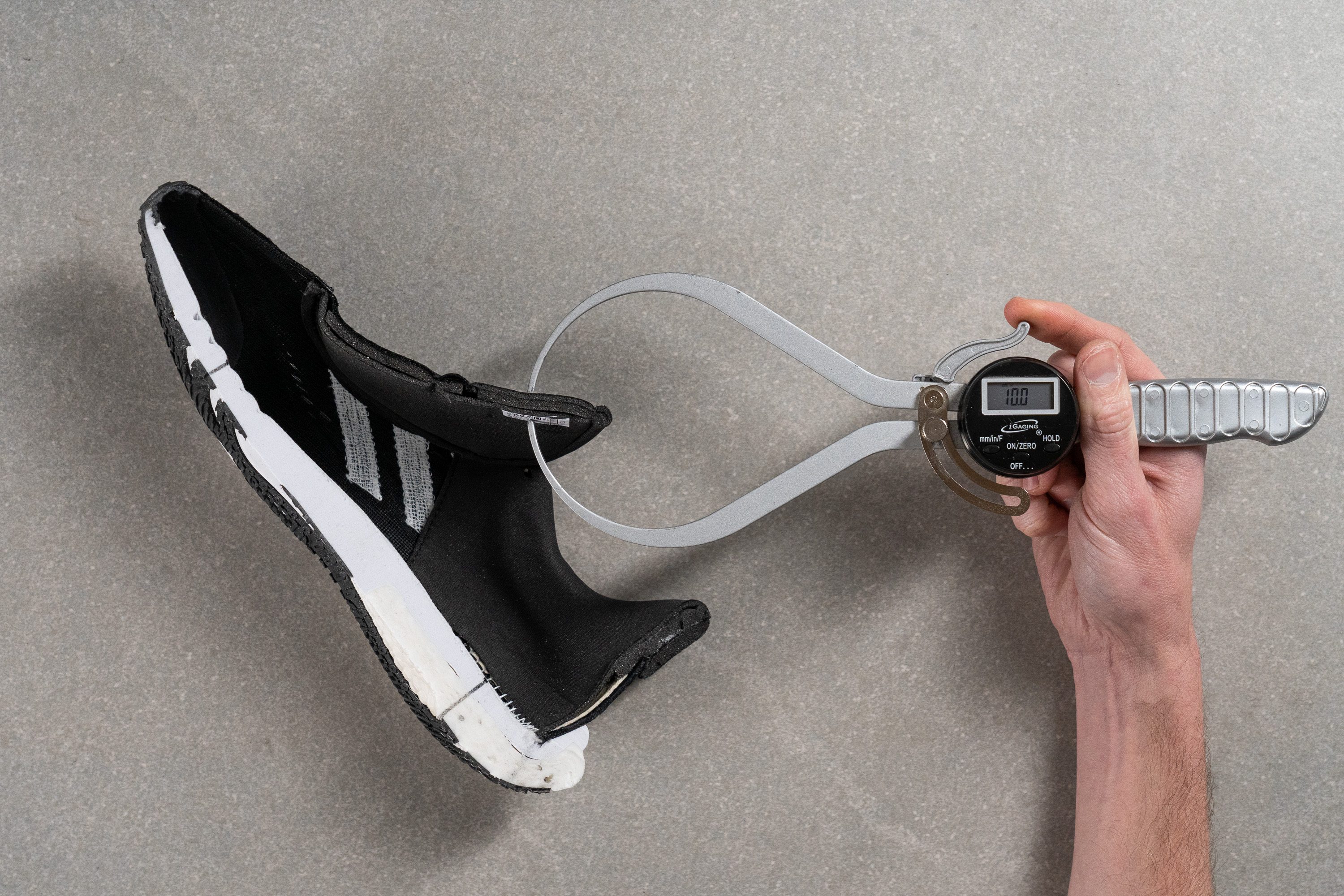
| Supernova 3 | 10.0 mm |
| Average | 5.8 mm |
Tongue: gusset type
The Supernova 3 mainly targets beginners or those seeking a reasonably-priced shoe, which means sacrificing some premium features. One such compromise is the lack of a gusseted tongue, as it isn't attached to the sides.
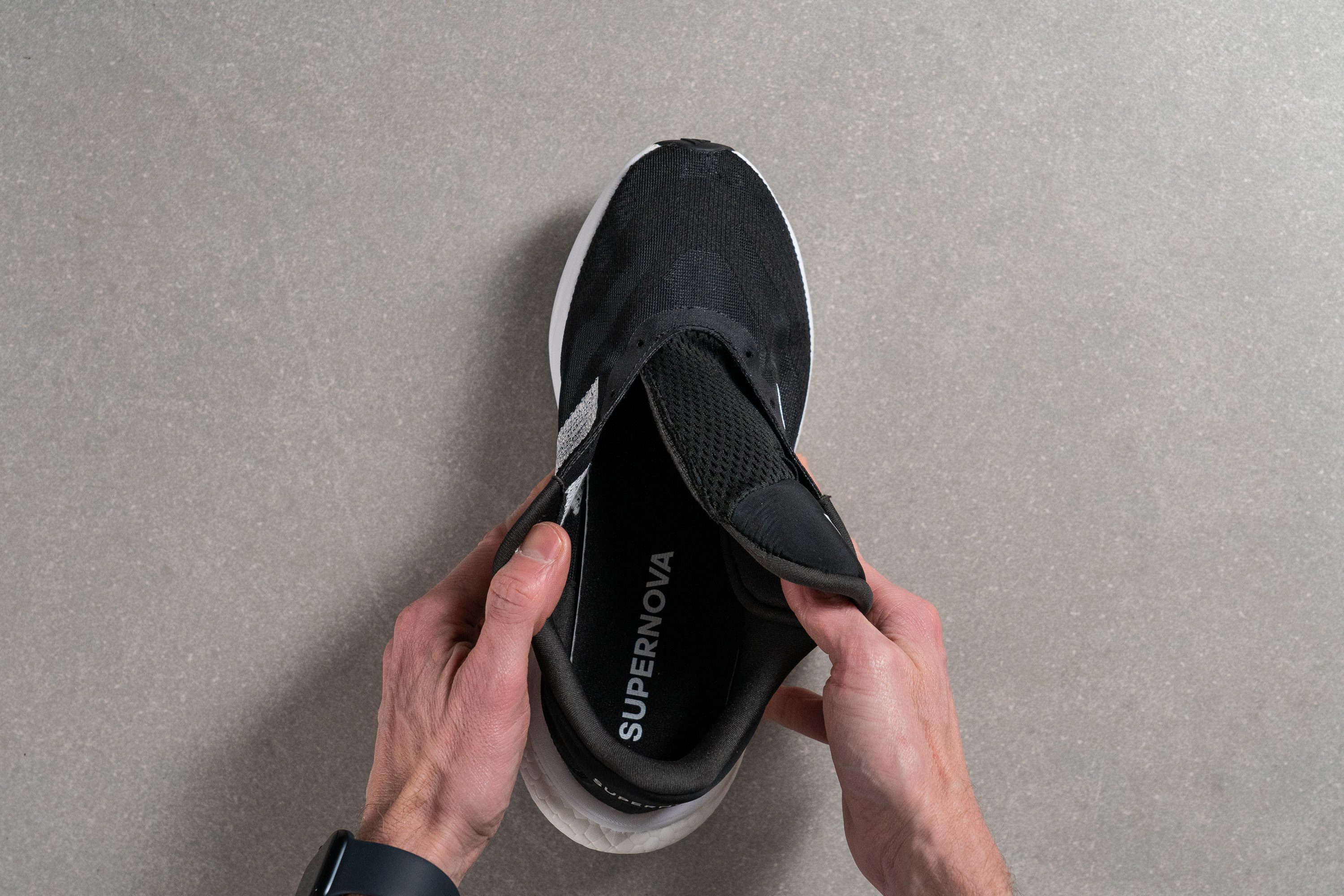
| Supernova 3 | None |
Heel tab
We noticed the lack of a heel tab, which would have made slipping on the shoes easier.
Instead, Adidas chose to place the model's name (Supernova) in this area, which, frankly, doesn't look very appealing to us.
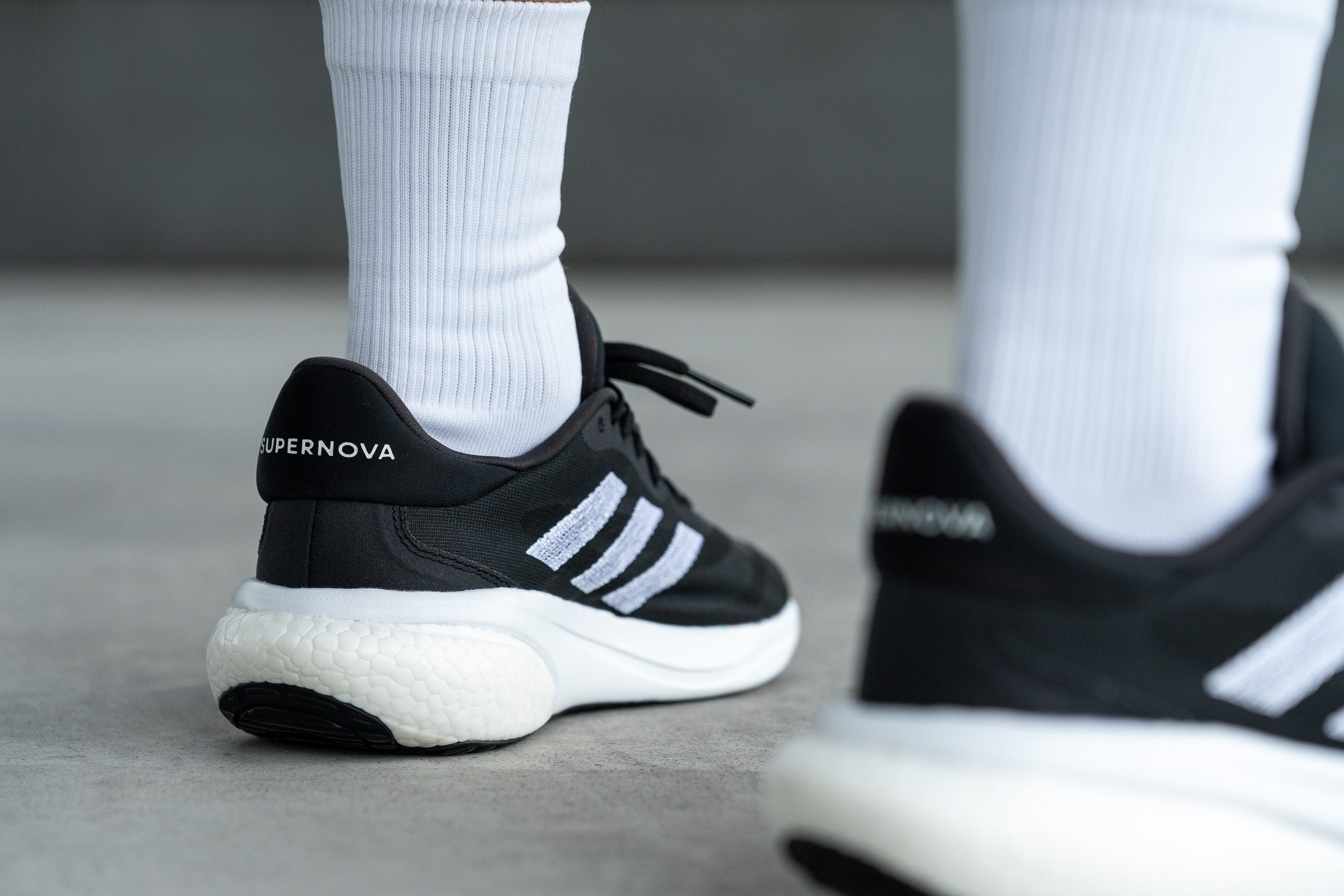
| Supernova 3 | None |





















































